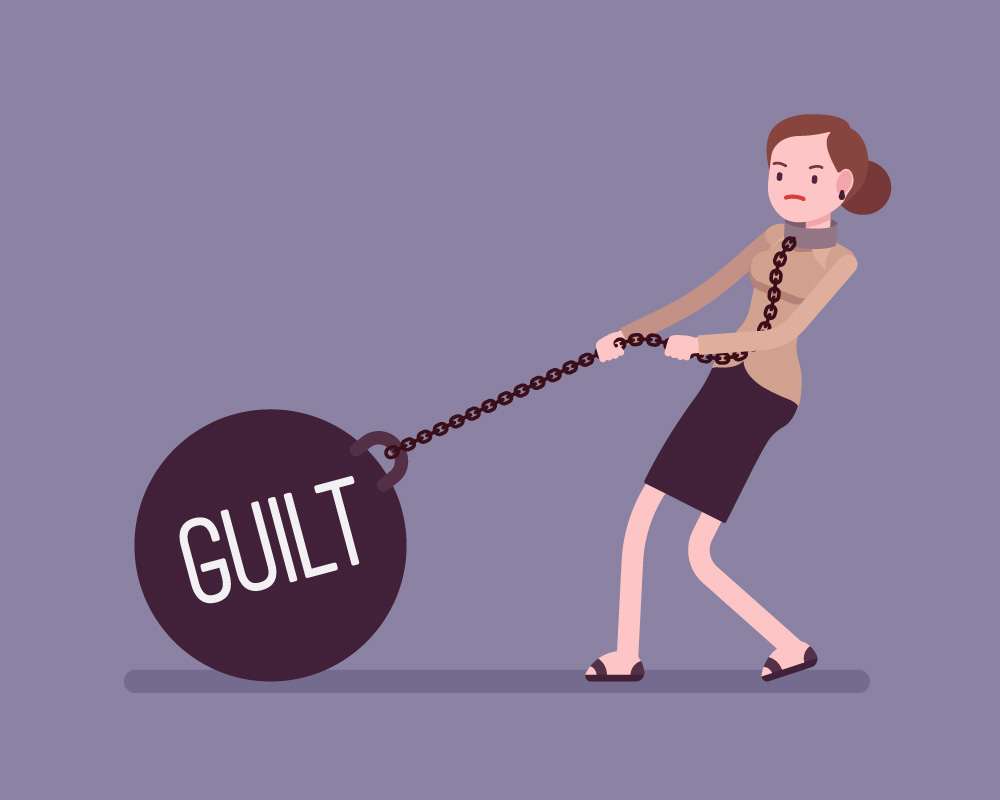
Survivor’s Guilt: The Unexpected Experience of Those Left Behind
As a leader during this pandemic, you may notice surprising behaviors from your team members. We are talking about employees who have not been directly impacted by the virus: they have not been infected, no one close to them has been affected, and they continue to work. In fact, their positions may have been identified as essential and thus they are not at risk for losing their jobs. However, despite not having been directly impacted, they may be irritable or unmotivated, and may report difficulty sleeping. There is a tendency as a leader in such situations to emphasize how fortunate they are. You may think to yourself that they have nothing to complain about. But this seemingly logical approach to their complaints will likely only make things worse. Why?
A regularly occurring, but unexpected, consequence of surviving a traumatic event is known as survivor’s guilt. This is defined as “having feelings of guilt for having survived a traumatic event when others did not.” It is a common reaction to traumatic events and, indeed, a symptom of post-traumatic stress disorder (PTSD). Survivor’s guilt was originally coined to describe feelings that survivors of the Holocaust experienced, but it can also apply to anyone who survives a traumatic event that others did not. This occurs not only in life or death situations. Employees holding onto a job when those around them have been laid off or fired can also experience a sense of guilt. At this point in the pandemic, we are seeing the highest rates of unemployment since the Great Depression! It is likely that the dwindling number of those who are still employed will feel some level of survivor’s guilt.
Feelings of guilt are most common following traumatic or life-threatening situations. Behaviors that can indicate survivor’s guilt include:
- Obsessive thoughts
- Irritability and anger
- Feelings of helplessness
- Fear and confusion
- Lack of motivation
- Physical complaints (e.g., headaches, nausea or stomach problems, racing heart, trouble sleeping)
- Social isolation and heightened absenteeism
- Increased alcohol usage
- Suicidal thoughts
Survivors may harbor a set of false beliefs regarding their role in such an event, such as obsessing about how they might have prevented a negative outcome. Links have been found between survivor’s guilt and submissiveness and introversion. Survivors who have had family members or very close friends harmed or terminated are more likely to experience guilt than those who did not have any close connection. In virtually all cases, managers are likely to see a decrease in productivity.
When leaders notice employees experiencing behaviors that are associated with survivor’s guilt, especially if that is unusual for the employee, it is important for the leader to respond in a way that will help (rather than hinder) the employee returning to full productivity. In no case will shaming or diminishing the feelings of the employee be beneficial, especially in the long term.
Here are some leadership behaviors found to be most helpful in assisting such employees:
- Empathy: Let those on your team know that the loss of others, through no fault of their own, has also saddened you. Publicly recognize that their loss is also your loss.
- Grieving: Accept and allow others to have and express feelings of sadness related to the loss of those friends and coworkers. Undoubtedly, there will be a cloud cast over the organization until such a time that a new normal is reached. Trying to rush through the grief is akin to pushing a rope uphill—it will only frustrate the leader and lead to a loss of confidence on the part of the employees.
- Connecting: Getting through a sustained traumatic event is facilitated when people are able to freely and openly connect with others. Encourage team members to stay in touch with each other and discuss their feelings, as needed. This can include establishing a structured time during the day or encouraging ad hoc social connections at lunch, breaks, and on projects.
- Communicating: Discuss what really led up to the situation. This is usually external factors—for example, coronavirus—unconnected to the individual. Providing context through rationality (external factors) to accompany the guilt (internal factors) can promote a healthy perspective to grieving and guilt-ridden survivors.
- Structuring: In times of great transition and high emotion, having a structure to the day can help. It is up to leaders to provide a clear sense of direction in the short term and plenty of structure going forward. This helps those experiencing survivor’s guilt get through the day and gives them a sense of accomplishment in the midst of their grieving.
If employees continue to experience heightened behaviors associated with survivor’s guilt after a reasonable time period (4 to 6 weeks), their leader may want to consider referring the employee for additional outside help in the form of counseling.
In all cases, leaders need to actively demonstrate their deep connection and understanding of what their employees are experiencing. In times like these, leaders would be wise to consider the wisdom of the great writer, Leo Tolstoy. He said: “Patience is waiting. Not passively waiting – that is laziness. But to keep going when the going is hard and slow – that is patience. The two most powerful warriors are patience and time.”

